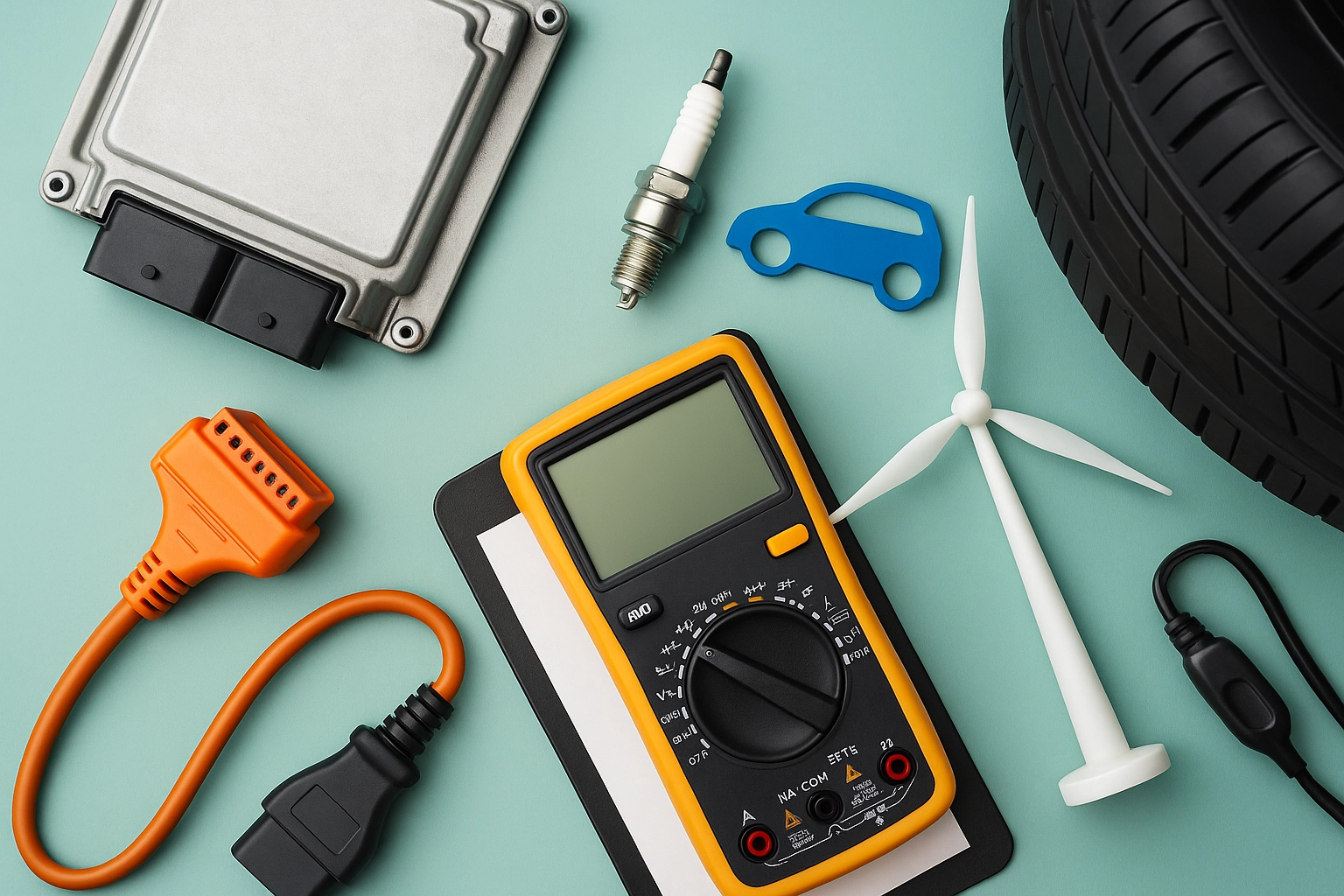SAE J3105 Overhead Conductive Charging System Test
The SAE J3105 test method is a critical standard for electric and hybrid vehicles (EVs/HVs) that use overhead conductive charging systems. This testing ensures the safety, performance, and reliability of these systems, which are essential components in modern vehicle designs. The standard addresses various aspects such as electrical connections, mechanical integrity, and operational efficiency during charging.
SAE J3105 defines a comprehensive set of tests to evaluate the performance of overhead conductive charging systems. These tests include voltage checks, current flow analysis, power transfer efficiency, and connection durability under various environmental conditions. The primary goal is to ensure that the system can operate safely and efficiently throughout its lifecycle.
The test procedure involves several steps to simulate real-world conditions and stress scenarios. For instance, the charging system is subjected to high and low temperatures, humidity, and dust exposure. These tests are crucial for validating the robustness of the charging infrastructure in different geographical locations and climatic zones. Additionally, the standard includes tests to ensure that the system can handle varying loads and frequencies without compromising safety or performance.
The SAE J3105 test is particularly important for electric vehicles (EVs) as they rely heavily on overhead conductive charging systems for recharging. The reliability of these systems directly impacts the overall user experience and vehicle availability. By adhering to this standard, manufacturers can ensure that their products meet industry best practices and regulatory requirements.
Another key aspect of SAE J3105 is its focus on safety. The test includes checks for electrical insulation integrity, grounding, and overcurrent protection. These measures are essential for preventing potential hazards such as electrical shorts or fires. By implementing the SAE J3105 standard, manufacturers can significantly reduce the risk of accidents related to overhead conductive charging systems.
The SAE J3105 test method is applicable to various types of EVs and HVs that use overhead conductive charging systems. This includes both fixed-installation chargers and mobile charging solutions. The standard provides a framework for testing different components such as the contactors, cables, connectors, and power electronics.
In summary, the SAE J3105 test method is an essential tool for ensuring the safety, performance, and reliability of overhead conductive charging systems in electric and hybrid vehicles. By following this standard, manufacturers can produce high-quality products that meet industry best practices and regulatory requirements.
Applied Standards
| Standard | Description |
|---|---|
| SAE J3105-20XX | Defines the test method for overhead conductive charging systems in electric and hybrid vehicles. |
| IEC 61851 | International standard for low-voltage power circuit integrity of equipment used with alternating current (AC) or direct current (DC). |
| ASTM F2734 | Standard test method for evaluating the performance of overhead conductive charging systems. |
The SAE J3105 standard is complemented by other international standards such as IEC 61851 and ASTM F2734. These standards provide additional guidance on specific aspects of overhead conductive charging systems, ensuring a comprehensive testing approach.
Scope and Methodology
The scope of the SAE J3105 test method covers several key areas:
- Electrical connections: Ensuring secure, reliable electrical contact between the vehicle and the charging system.
- Mechanical integrity: Verifying the durability and strength of the mechanical components involved in the charging process.
- Operational efficiency: Evaluating the power transfer efficiency under different conditions to ensure optimal performance.
The methodology for conducting these tests involves a series of steps designed to simulate real-world scenarios. This includes:
- Environmental conditioning: Exposing the system to various environmental conditions such as temperature, humidity, and dust.
- Loading and unloading cycles: Simulating the charging process under different loads and frequencies.
- Inspection and measurement: Conducting thorough inspections and measurements to ensure compliance with specified standards.
The test procedure is designed to be rigorous and comprehensive, ensuring that all aspects of the overhead conductive charging system are thoroughly evaluated. This approach helps identify potential issues early in the development process, allowing for timely corrections and improvements.
By following this methodology, manufacturers can ensure that their products meet the highest standards of safety and performance. The SAE J3105 test method provides a robust framework for evaluating overhead conductive charging systems, enabling manufacturers to produce reliable and efficient products.
Environmental and Sustainability Contributions
- Emission reduction: By ensuring the reliability of overhead conductive charging systems, SAE J3105 helps reduce emissions from vehicles during recharging.
- Resource efficiency: The standard promotes the efficient use of resources by minimizing waste and ensuring optimal performance.
- Energy conservation: By improving power transfer efficiency, SAE J3105 contributes to energy conservation in electric vehicle charging infrastructure.
The SAE J3105 test method plays a crucial role in promoting environmental sustainability by addressing key areas such as emission reduction, resource efficiency, and energy conservation. By adhering to this standard, manufacturers can contribute to a more sustainable future for electric and hybrid vehicles.





